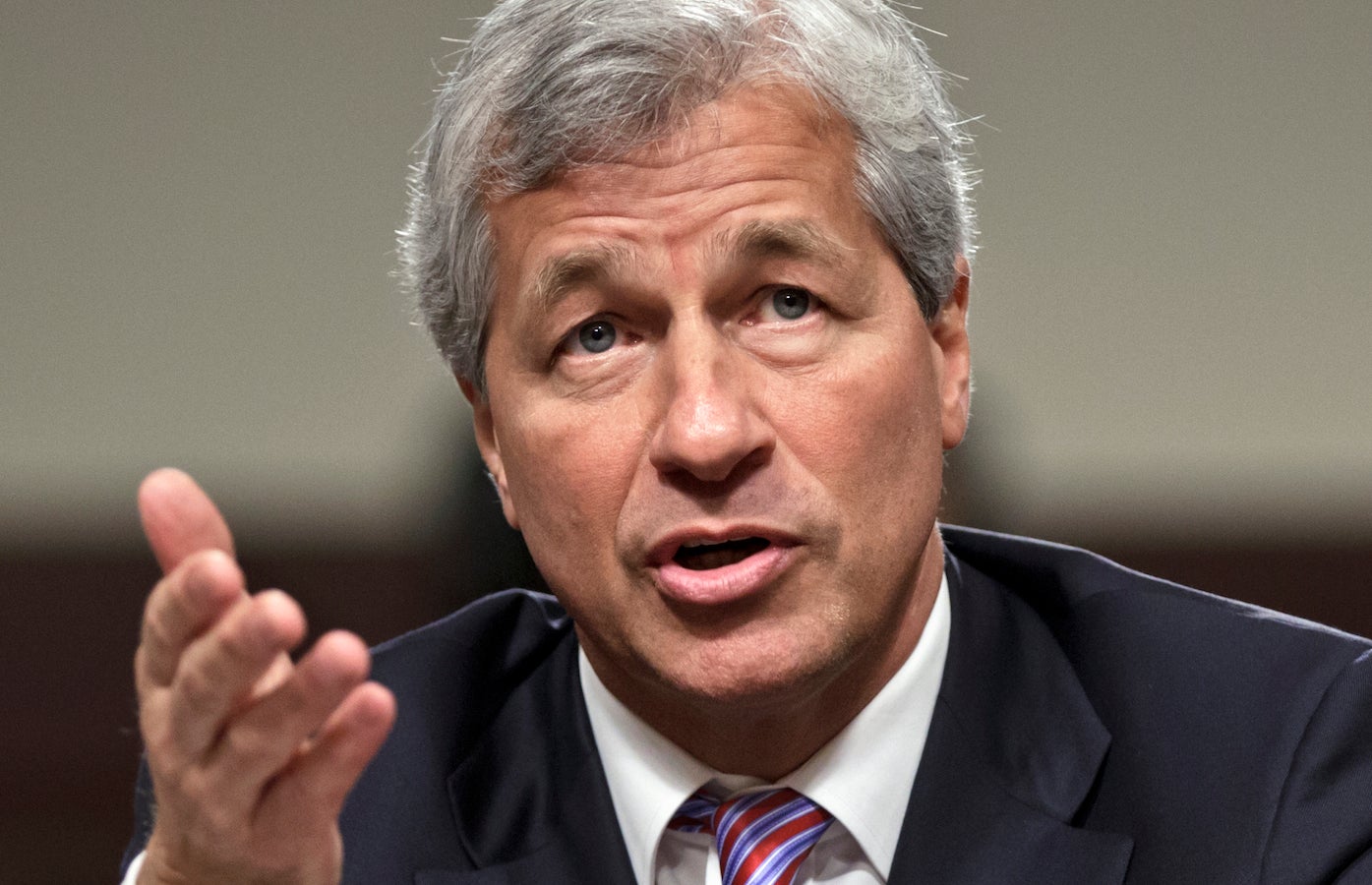JPMorgan Chase and Silicon Valley are battling it out—over you
“Silicon Valley is coming.” That’s the warning JPMorgan Chase CEO Jamie Dimon issued in his letter to shareholders (pdf) this year, and it no doubt was a big motivation behind the development of Chase Pay, the Apple Pay competitor that Chase unveiled this week.


“Silicon Valley is coming.” That’s the warning JPMorgan Chase CEO Jamie Dimon issued in his letter to shareholders (pdf) this year, and it no doubt was a big motivation behind the development of Chase Pay, the Apple Pay competitor that Chase unveiled this week.
The ongoing battle for digital-payment supremacy is mainly between banks and big tech companies, but it’s really all about you, the consumer. Both sides are fighting to control the customer relationship involved when you purchase things.
In the past, this relationship has mostly revolved around you and whatever financial institution issued the credit or debit card you used in the transaction. But when you pay with a smartphone, this isn’t necessarily the case—in a transaction using Apple Pay, for example, Apple’s device and branding are in the forefront, while the bank card and brand are relegated to the backseat.
Like Capital One’s recently unveiled mobile wallet, Chase Pay represents an effort by financial institutions to reclaim the customer relationship. The question is which way consumers will go.
For merchants, there are a lot of great reasons to work with Chase Pay, even over Apple Pay. For one, Chase is charging lower interchange fees on Chase Pay transactions—interchange fees, set by the card networks and intended to cover the cost of issuing cards and mitigating fraud claims, arguably are one of the biggest fixed costs for merchants. This probably helps explain why Chase was able to partner with MCX, the retail consortium that that has been trying (thus far rather unsuccessfully) to help merchants go their own way on mobile payments.
But for consumers, Chase Pay is a relatively inelegant experience. First, it uses QR codes instead of near field communication technology, which powers Apple Pay (and Android Pay and Samsung Pay). Both provide contactless experiences. But with QR technology, you still have to scan a barcode that has the payment information inside it—and that’s after you’ve unlocked your phone, opened the payment app, and shown the code the cashier, who then scans it.
In comparison, Apple Pay looks really easy—just hold your phone against a terminal, and scan your fingerprint with Touch ID. No need to unlock your phone or launch an app like there is with Chase Pay. This ease of use has resonated with consumers; while actual usage is far from widespread among Apple iPhone owners, those who actually use Apple Pay love it (paywall).
Banks are still a big part of the Apple Pay experience, but after the initial sign up process, they’re essentially invisible. Customers associate all the benefits of Apple Pay—the biometric security and ease of experience—with Apple, not the banks. It makes sense that banks are frustrated with the now passive role they have in the consumer experience. What’s unclear is whether their answer to this threat will be enough to change that.